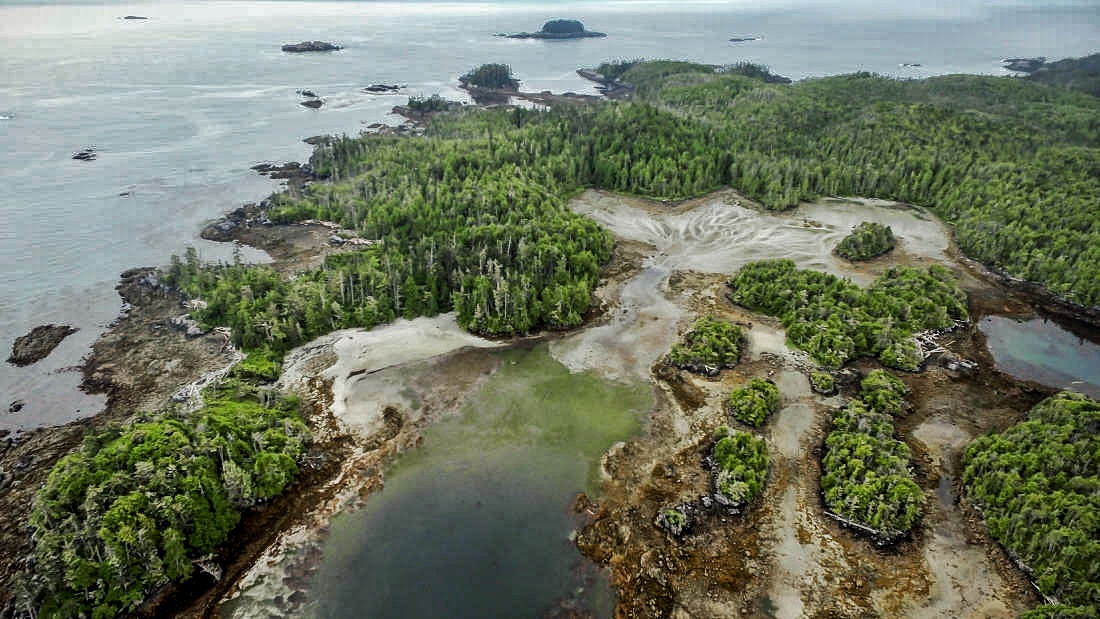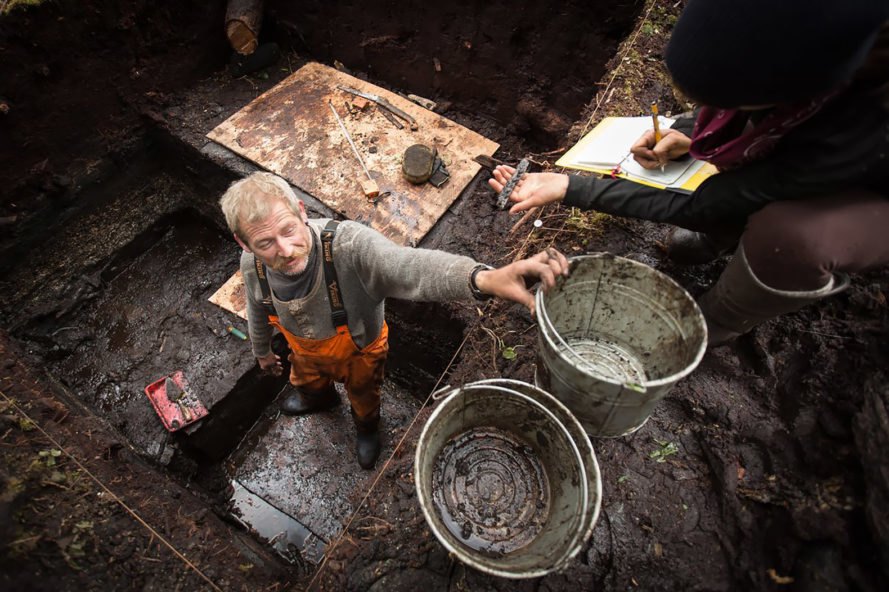Evidence of a 14,000-year-old settlement found in western Canada
Archaeologists and students from the Hakai Institute at the University of Victoria in British Columbia, as well as local First Nations, have discovered the ruins of a town that predates the Egyptian pyramids at Giza.

The location on Triquet Island, some 300 miles from Victoria in western British Columbia, has generated artifacts that have been carbon-dated to 14,000 years ago, nearly 9,000 years older than the pyramids, according to Alisha Gauvreau, a student at the University of Victoria.
The settlement, now thought to be the earliest ever discovered in North America, featured tools, fish hooks, spears, and a cooking fire with chunks of charcoal that these ancient people likely burnt. The charcoal bits were significant because they were simple to carbon-date.
What brought them to this specific location? The university students had heard an ancient narrative about the Heiltsuk people, who were indigenous to the area. The story goes that there was a little patch of land that never froze, even throughout the previous Ice Age. This piqued the students’ interest, and they set out to discover the location.
A spokesman for the indigenous Heiltsuk First Nation, William Housty, says it “is just amazing” that the stories that were passed down from generation to generation turned out to lead to a scientific discovery.

“This find is very important because it reaffirms a lot of the history that our people have been talking about for thousands of years,” he says. The stories described Triquet Island as a sanctuary of constancy due to the fact that the sea level in the area remained stable for 15,000 years.
The tribe has been in many clashes regarding land rights and Housty feels that they will be in a strong position in future situations with not only oral stories but also scientific and geological evidence to back them up.
The discovery may also lead researchers to change their beliefs about the migration routes of the early people in North America. It is generally believed that when humans crossed an ancient bridge of land that once connected Asia and Alaska, they migrated south on foot.
But the new findings indicate that people used boats to traverse the coastal area, and the dry-land migrations came much later. According to Gauvreau, “What this is doing is changing our idea of the way in which North America was first peopled.”

Earlier, the oldest indications of the Heiltsuk people in British Columbia were discovered in 7190 BC, around 9,000 years ago—a full 5,000 years after the artifacts were discovered on Triquet Island. There were around 50 Heiltsuk communities on the islands around Bella Bella in the 18th century.
They subsisted on the sea’s riches and developed trade with neighboring islands. When the Hudson’s Bay Company and Fort McLoughlin were founded by Europeans, the Heiltsuk people refused to be forced out and continued to trade with them. The tribe now holds the territory claimed by the Hudson’s Bay Company when its settlers arrived.
Related Post
A shocking documentary proves that mermaids do exist
SHOCKING Revelation: Thuya, Mother of Queen Tiye, Was the Grandmother of Akhenaten and Tutankhamun—What Ancient Egyptian Secrets Did She Leave Behind?
Breaking News: Astonishing Discoveries at Karahan Tepe Confirm an Extraterrestrial Civilization is Hiding on Earth, and NO ONE Knows!
Breaking News: Researchers FINALLY Discover U.S. Navy Flight 19 After 75 Years Lost in the Bermuda Triangle!
NASA’s Secret Investigation: Uncovering the Astonishing Mystery of the UFO Crash on the Mountain!
Explosive UFO Docs LEAKED: Startling Proof That Aliens Ruled Ancient Egypt!